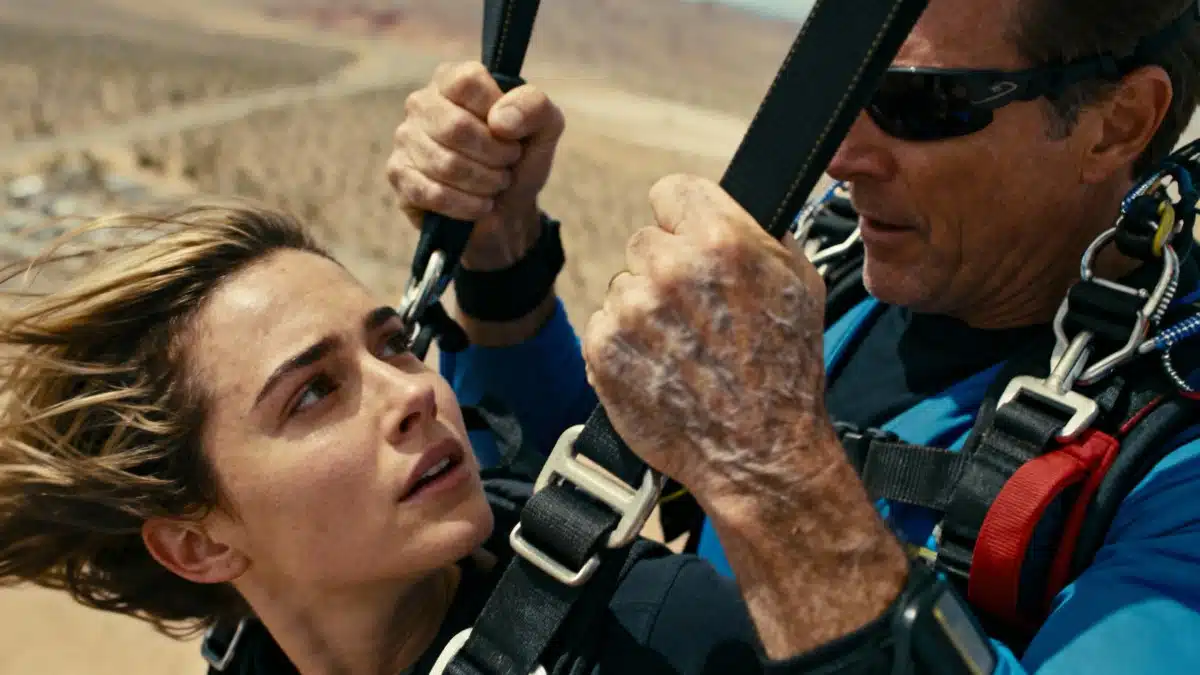When Skydiving Dreams Become Nightmares: A Harrowing Descent Over the Nevada Desert
Spin at 11,000 Feet: The Day Skydiving Went Terribly Wrong
It was supposed to be the thrill of a lifetime. For one skydiving student and his instructor in rural Nevada, however, their morning jump on September 17 turned into a battle for survival—one that plummeted tragically fast and ended with both fighting for their lives. Police records show the pair’s tandem fall ended at blistering speeds near Jean, after a parachute failure sent them spinning out of control.
The Jump: Tandem Flight, Catastrophic Malfunction
According to a Metropolitan Police Department report, the 54-year-old skydiving instructor and his 24-year-old student strapped together for a tandem leap from a dizzying height of 11,000 feet. It was all supposed to be straightforward—exhilarating, maybe terrifying, but ultimately safe. But in the harsh desert air, things quickly spiraled. Witnesses recounted a chilling sequence: a backup parachute tangled up the main chute, keeping it from opening fully and dooming the pair to an uncontrollable spin high above the sand.
Those critical moments grew more urgent. The instructor made a last-ditch effort, cutting away the main parachute and deploying a reserve. But by then, recovery was impossible. Moments later, with both descending at 35 to 45 mph, they collided with the earth. Only luck—or sheer resilience—kept tragedy from claiming their lives outright. Police and emergency reports confirm both suffered critical injuries; the instructor, identified by family friend Mario Viteri as Jiron Arcos Ponce, remained in critical condition at UMC as of the following Monday.
What We Know: The Plane, the Company, and the Aftermath
The police report noted the aircraft involved was operated by GoJump Las Vegas, yet a representative for GoJump stated the business was closed on the day of the jump. Such airborne mysteries aren’t easily solved. Even detective work grows tricky, given the airport near Jean is managed by Harry Reid International Airport but maintains no regular logs of activity—no air-traffic control tower, no tidy ledger of who came and went.
Investigators and journalists have followed the paper trail with limited success. Business registrations show Skydive Las Vegas is managed by Brent Buckner, who also operates Sin City Skydiving, another local adventure outlet. Attempts to contact Buckner proved fruitless; when pressed about Skydive Las Vegas’s connection to the accident, a spokesperson (keeping their sense of mystery perhaps a little too alive) simply said, « no comment. » As of press time, the student’s identity has not been provided by authorities.
While the incident unfolds, the Metropolitan Police Department stands firmly by its report. Officials hinted all further revelations will come from the Federal Aviation Administration—because, in skydiving as in life, sometimes answers are up in the air.
Rules, Laws, and Loose Ends in the Skies
You’d be forgiven for assuming the world of skydiving is one of strict rules and hearty checklists. State law does require all skydiving outfits to abide by the United States Parachute Association’s Skydiver’s Information Manual—a hefty read on safe plummeting, we assume. Any business must also report deaths or severe injuries to the association within a single business day. Safety procedures and timely notifications are the law of the land, but human error, faulty equipment, and the unexpected remain constant adversaries.
- Skydiving operations in Nevada must follow the USPA Skydiver’s Information Manual for safety standards.
- Incidents causing death or serious injury must be reported within one business day.
- Local airports without control towers, like Jean, keep no formal record of aircraft movements.
An accident like this rattles more than the desert floor. It shakes any illusions of invincibility—even with an instructor, at thousands of feet, nothing is ever truly routine. While courage is required to leap from a perfectly good airplane, it’s vigilance, compliance, and frank communication that bring people safely back to earth.
For anyone considering their bucket list, the advice is clear: thrill-seeking should never come at the cost of safety. Stay curious, but ask questions—about training, equipment, and company record—before clipping into the harness. After all, the ground’s always waiting… let’s just hope you hit it running, not spinning.

John is a curious mind who loves to write about diverse topics. Passionate about sharing his thoughts and perspectives, he enjoys sparking conversations and encouraging discovery. For him, every subject is an invitation to discuss and learn.






